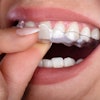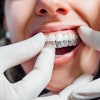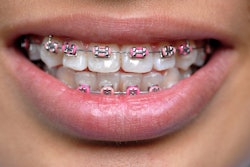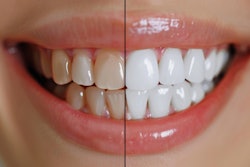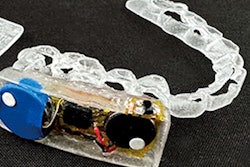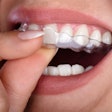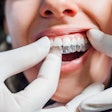The use of artificial intelligence (AI) in clear aligner therapy is growing, offering opportunities for improved efficiency, accuracy, and predictability in orthodontic planning, reports a review recently published in the Journal of Dentistry.
AI technologies appear to excel in tooth segmentation and demonstrated effectiveness in merging imaging data while showing strong results in treatment outcome predictions and promise for remote monitoring, the authors wrote.
"The findings of this review may aid professionals in managing daily clinical cases involving clear aligner therapy," wrote the authors, led by Débora Costa Ruiz of the OMFS Impath Research Group in Belgium (J Dent, January 9, 2025).
After conducting a systematic search of databases, 41 studies were analyzed. Key areas of focus included tooth segmentation, digital model registration, digital setup, and remote monitoring. Additionally, 13 orthodontic software programs were assessed for automation, with only one achieving complete workflow automation. The review aimed to evaluate the level of AI integration and automation in orthodontic software available to orthodontists, the authors wrote.
In tooth segmentation, metrics like intersection over union (0.87 to 0.98), dice similarity coefficient (0.92 to 0.96), and accuracy (0.89 to 0.98) demonstrated reliable AI performance, with segmentation times under 150 seconds for most software, except Orthoanalyzer, which took over 400 seconds. Some methods achieved segmentation in under seven seconds.
Furthermore, registration studies confirmed the accurate merging of cone-beam computed tomography and intraoral scanner data, with distances ranging from 0.17 mm to 0.30 mm, improved by using the iterative closest point algorithm combined with global-to-local tooth registration. For digital setups, AI showed promise in predicting tooth and arch positions and treatment outcomes, they wrote.
Remote monitoring, primarily using Dental Monitoring software, reduced patient appointments and improved plaque control but showed inconsistent treatment durations and outcomes. Overall, AI may hold significant potential but requires further refinement for broader clinical applications, the authors wrote. Further research is needed to validate underexplored tools, especially those involving AI-generated treatment plans, the authors added.
"This scoping review enables orthodontists to identify AI-based solutions in orthodontic planning and understand its implications, which can potentially enhance treatment efficiency, accuracy, and predictability," they wrote.

